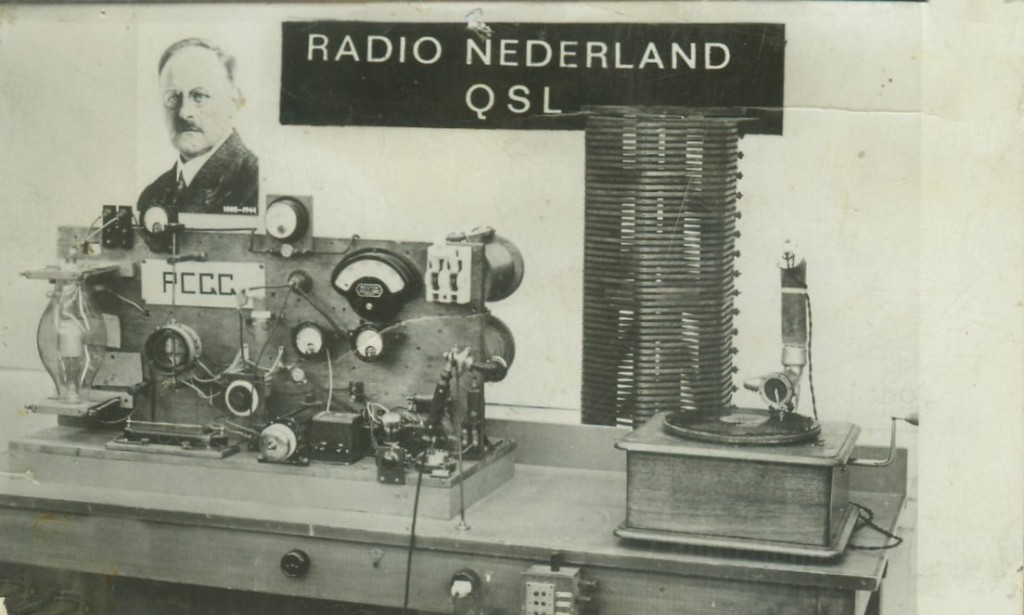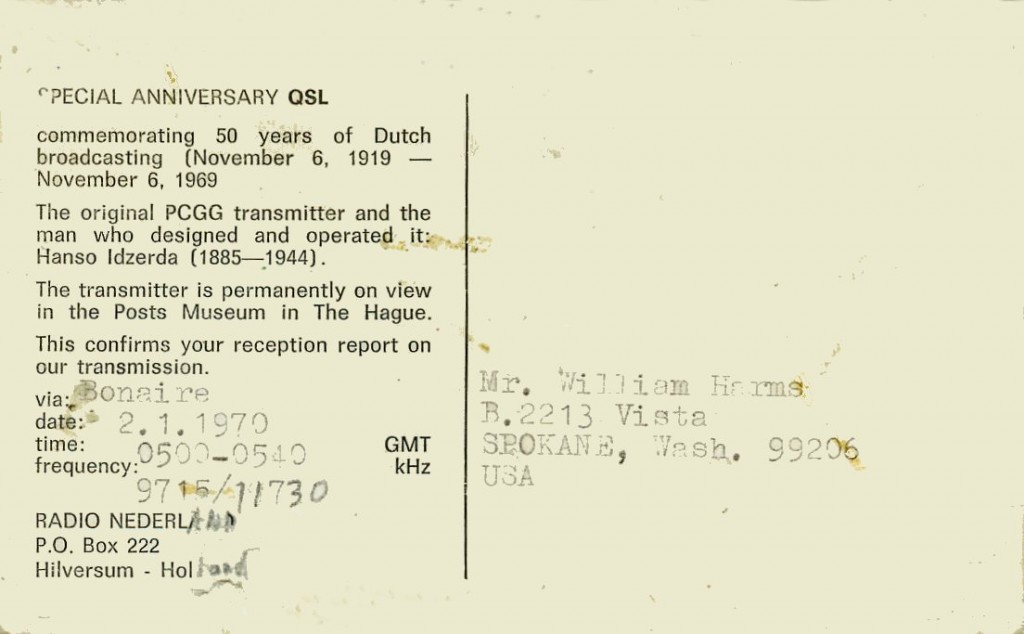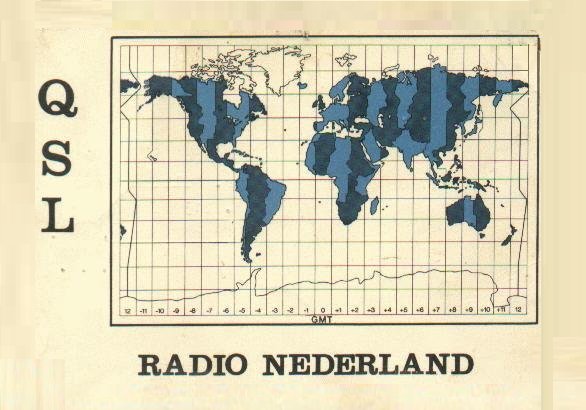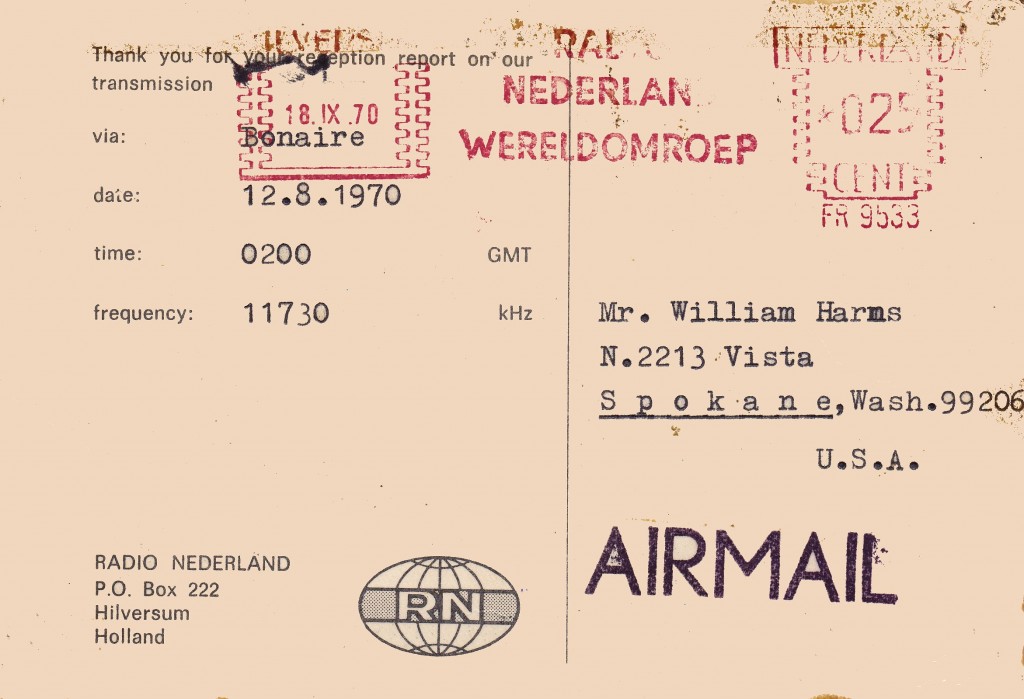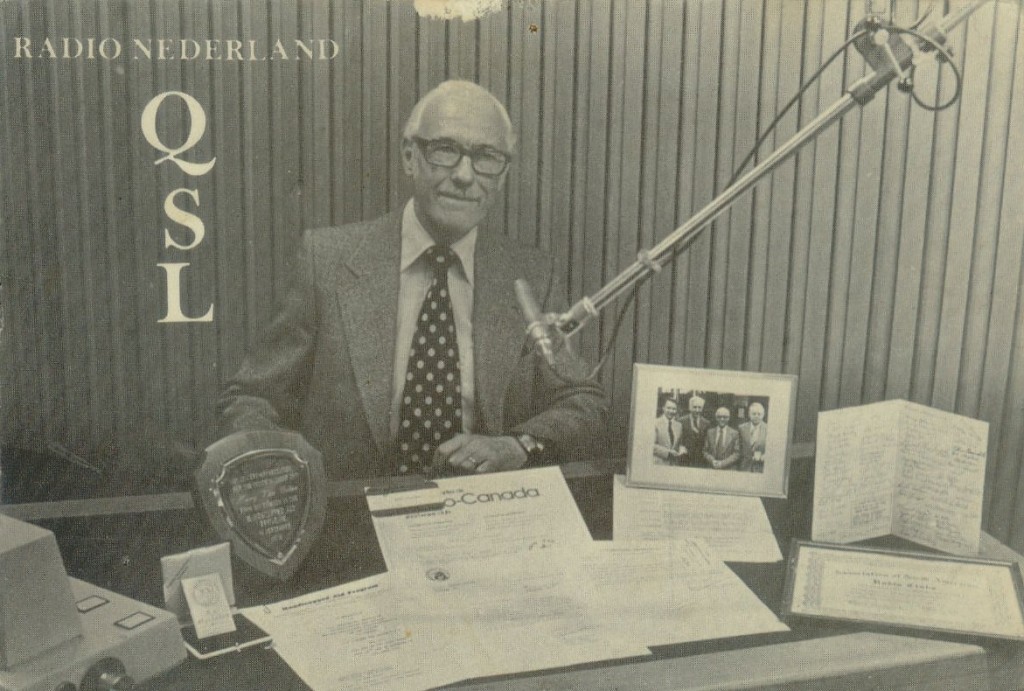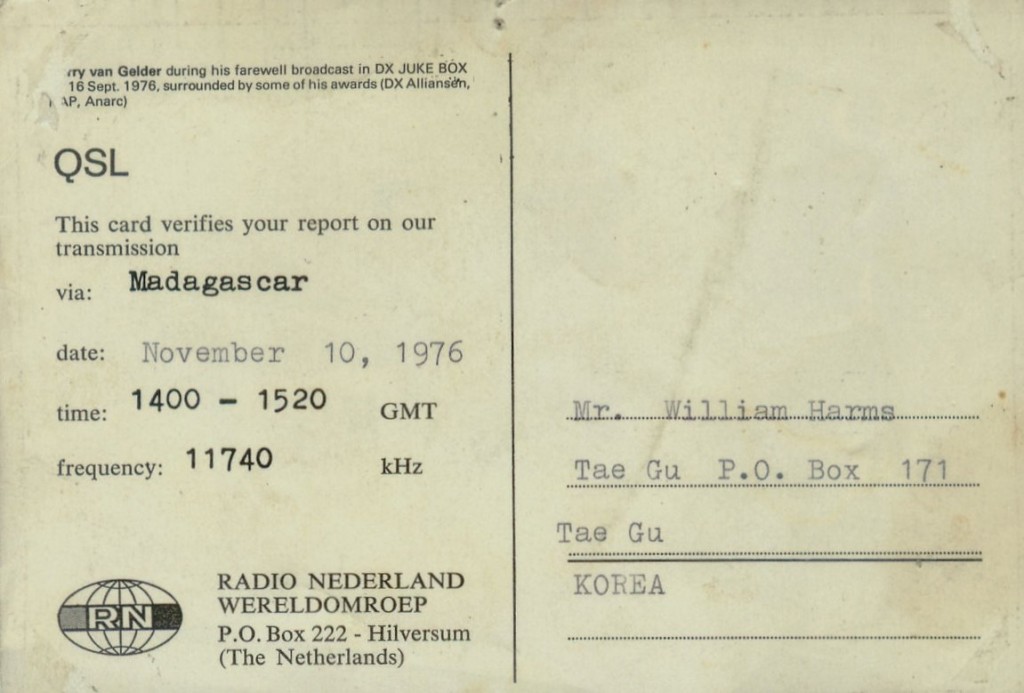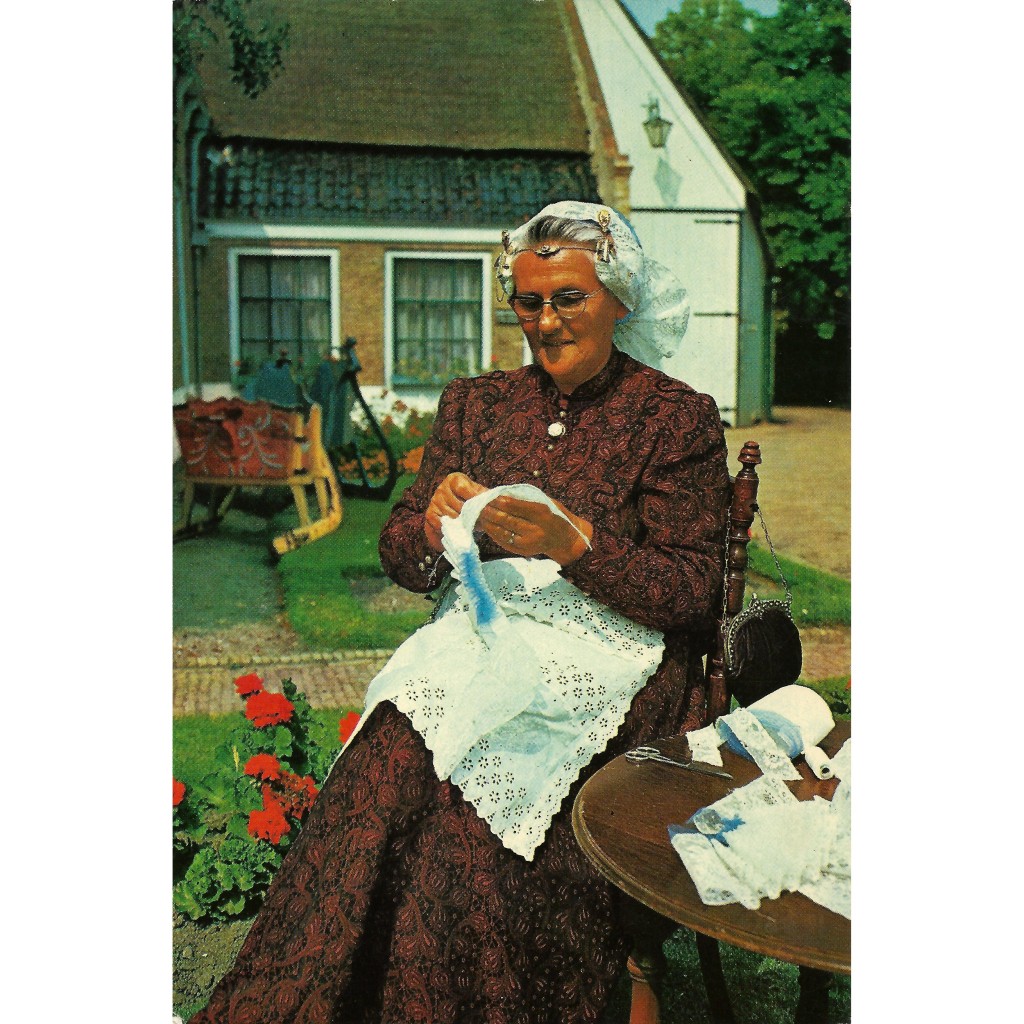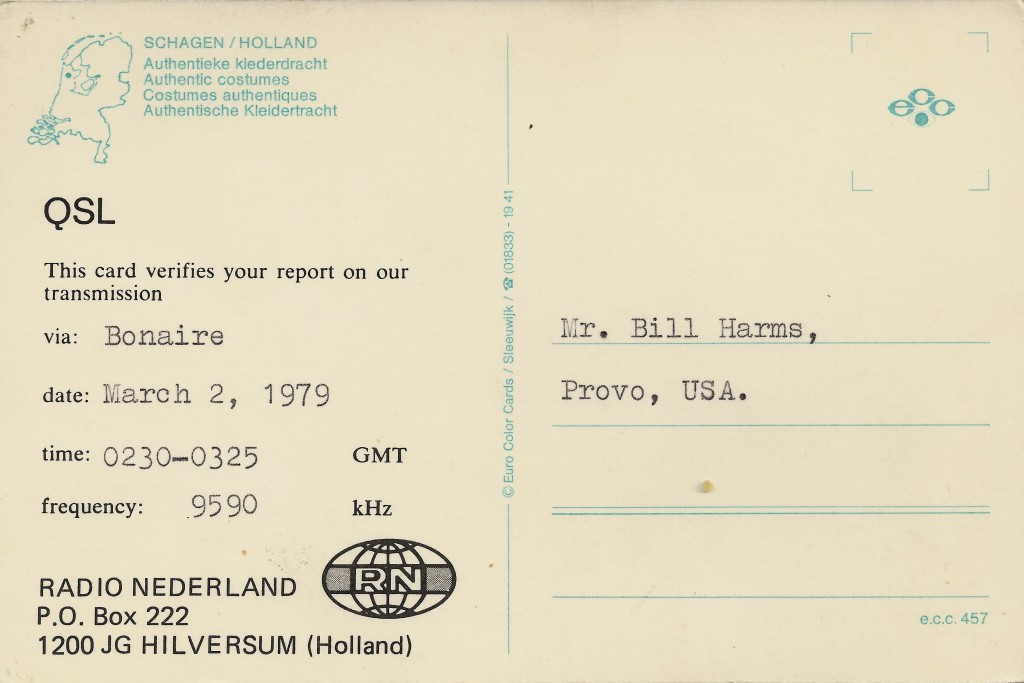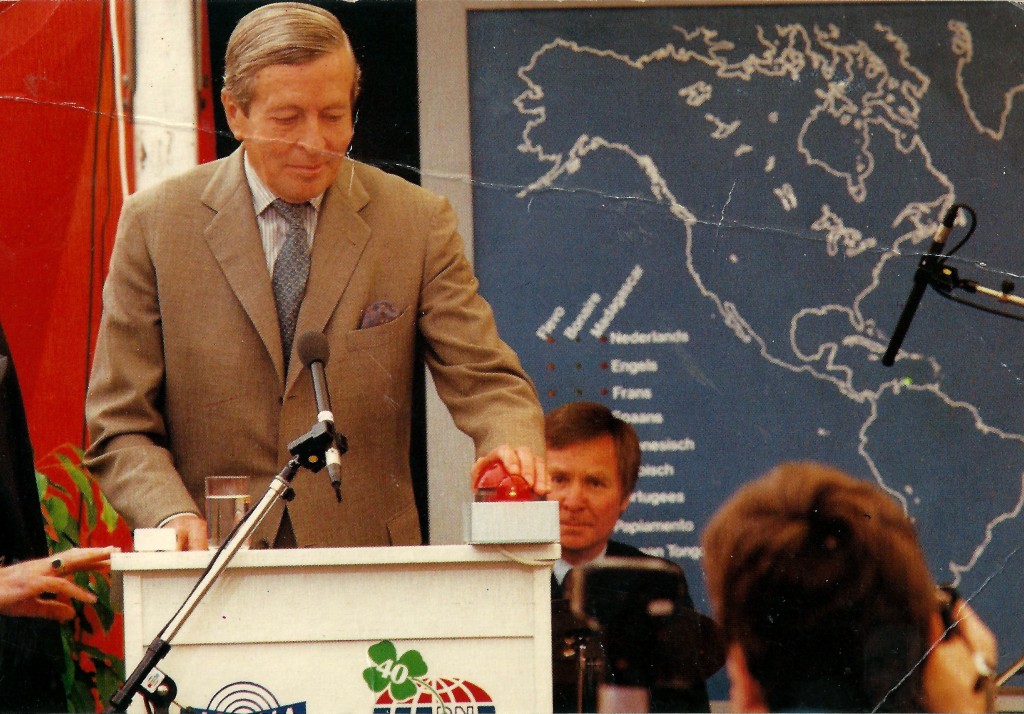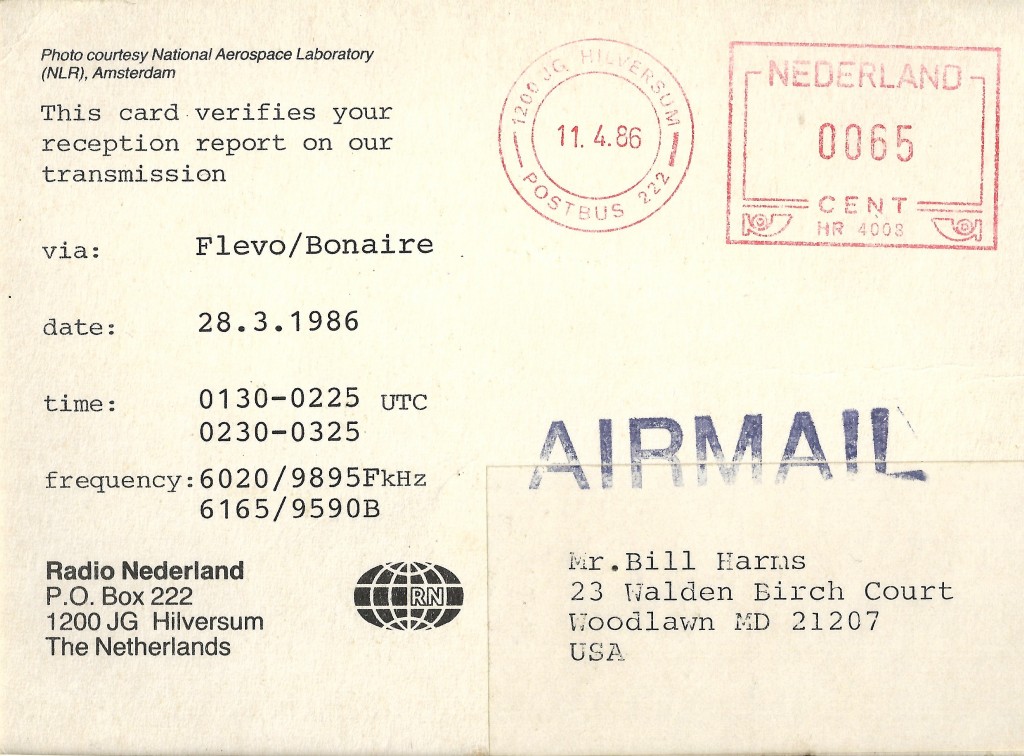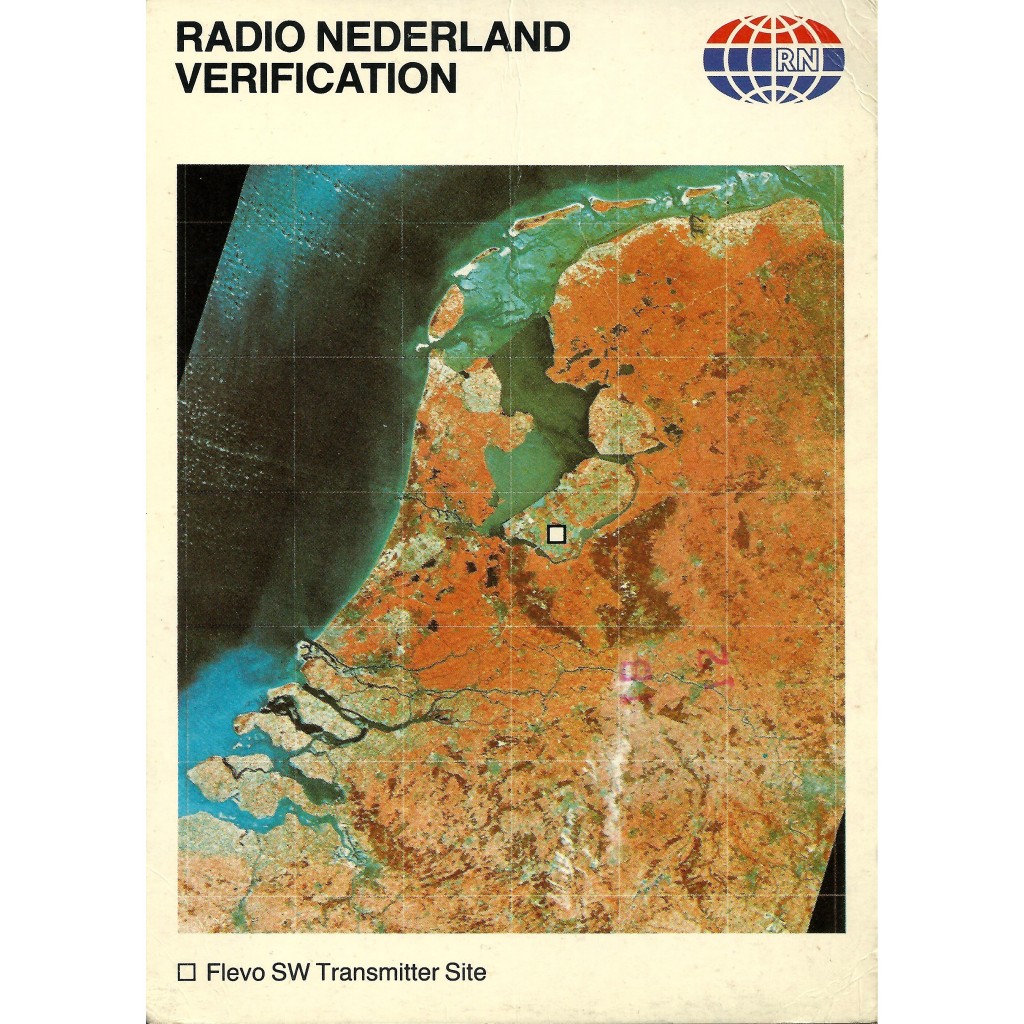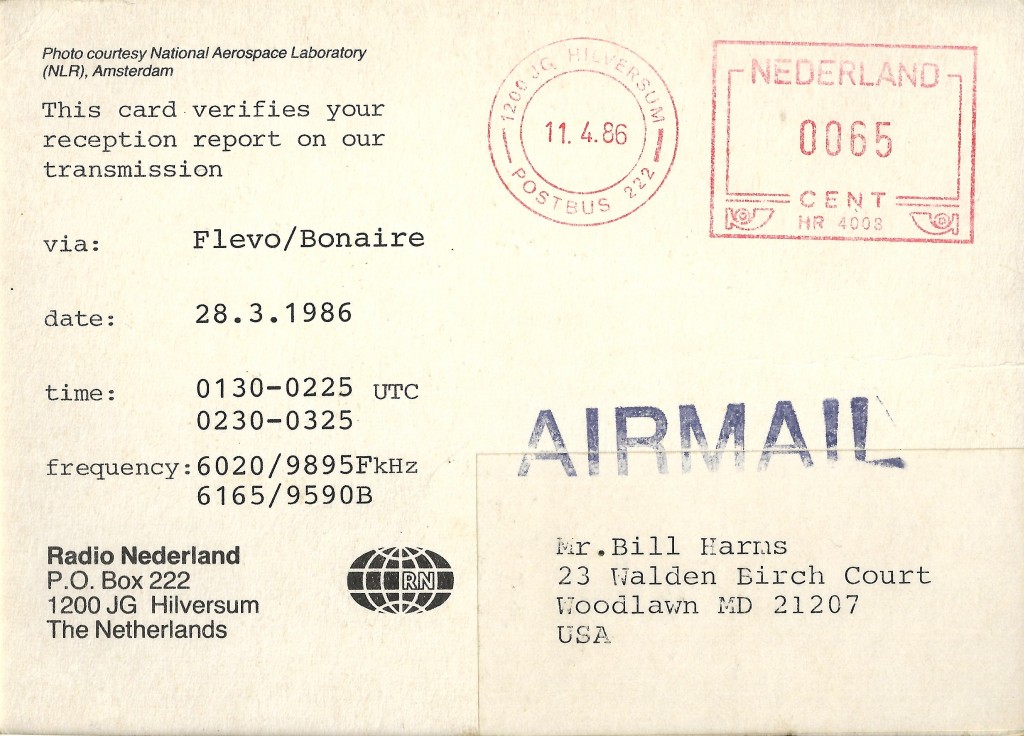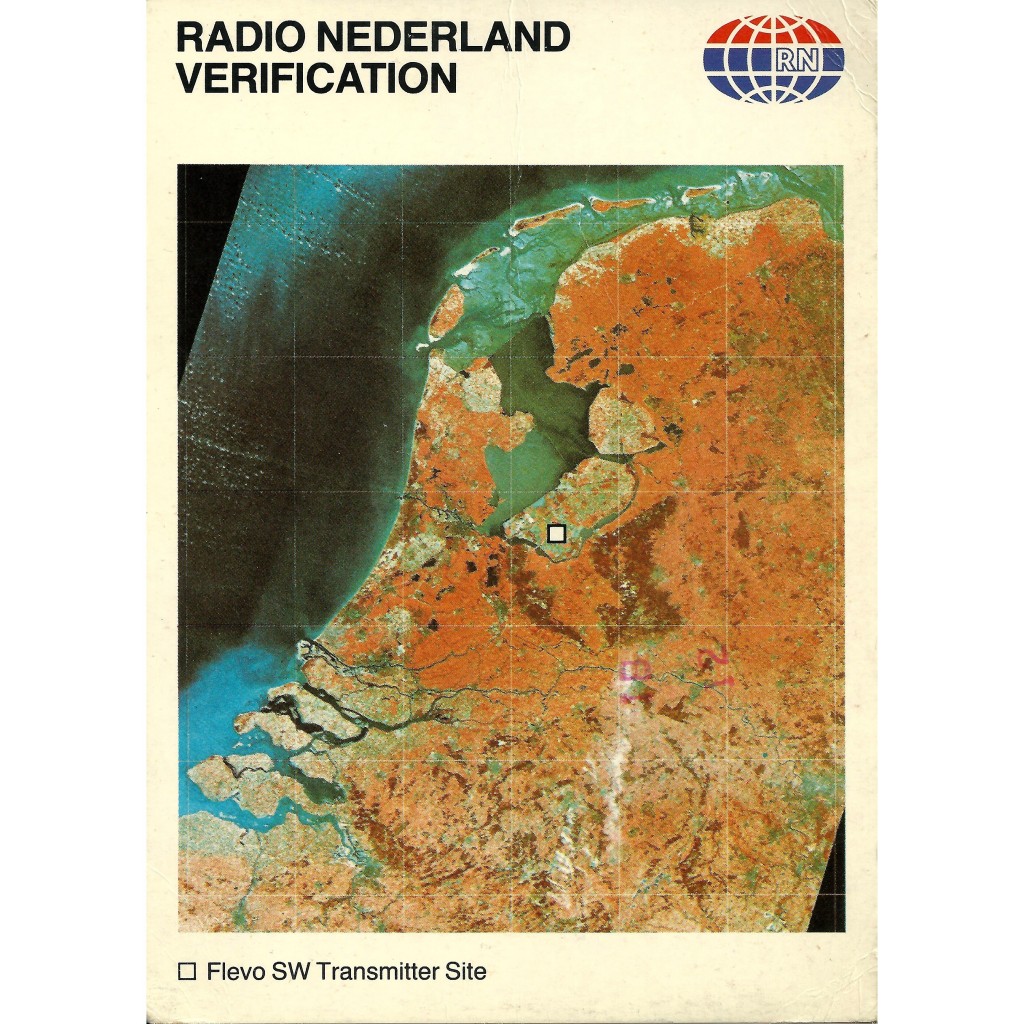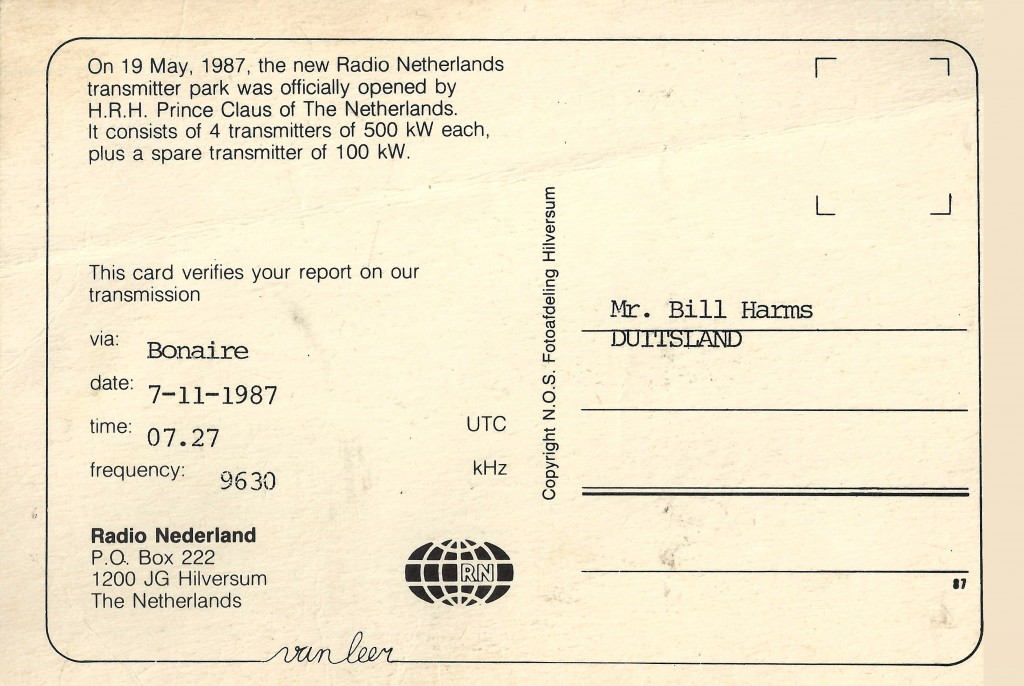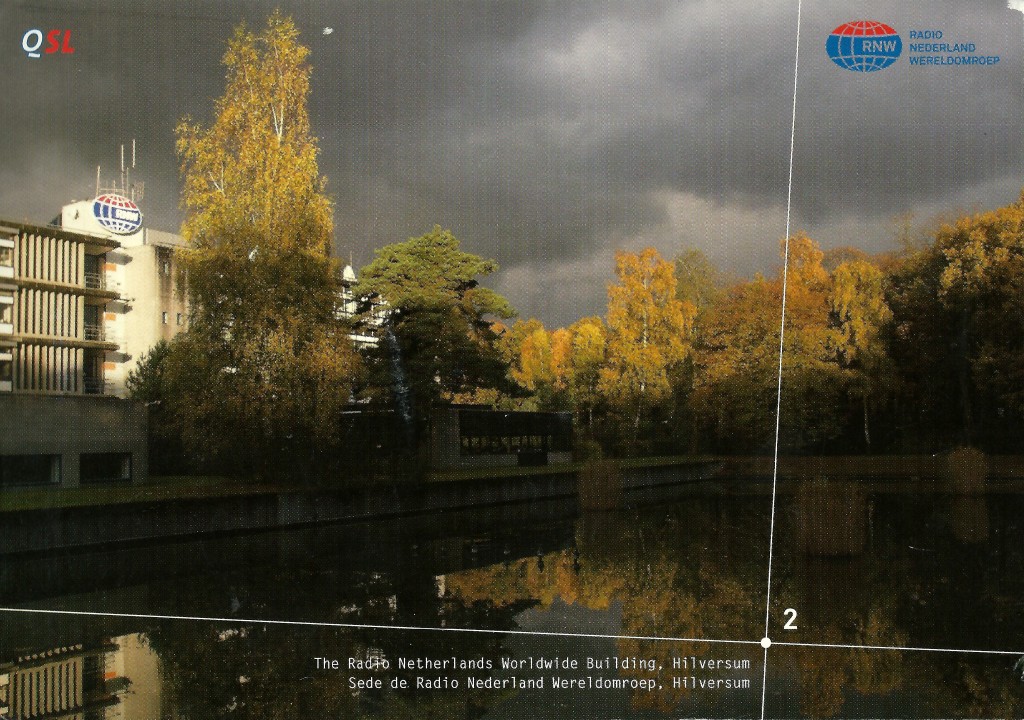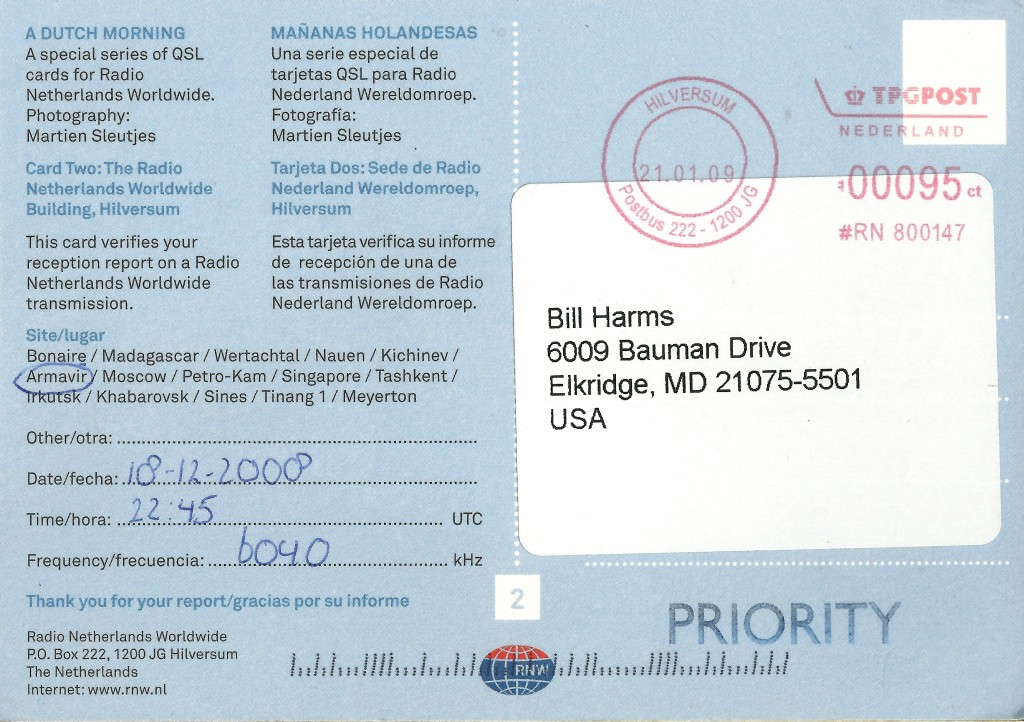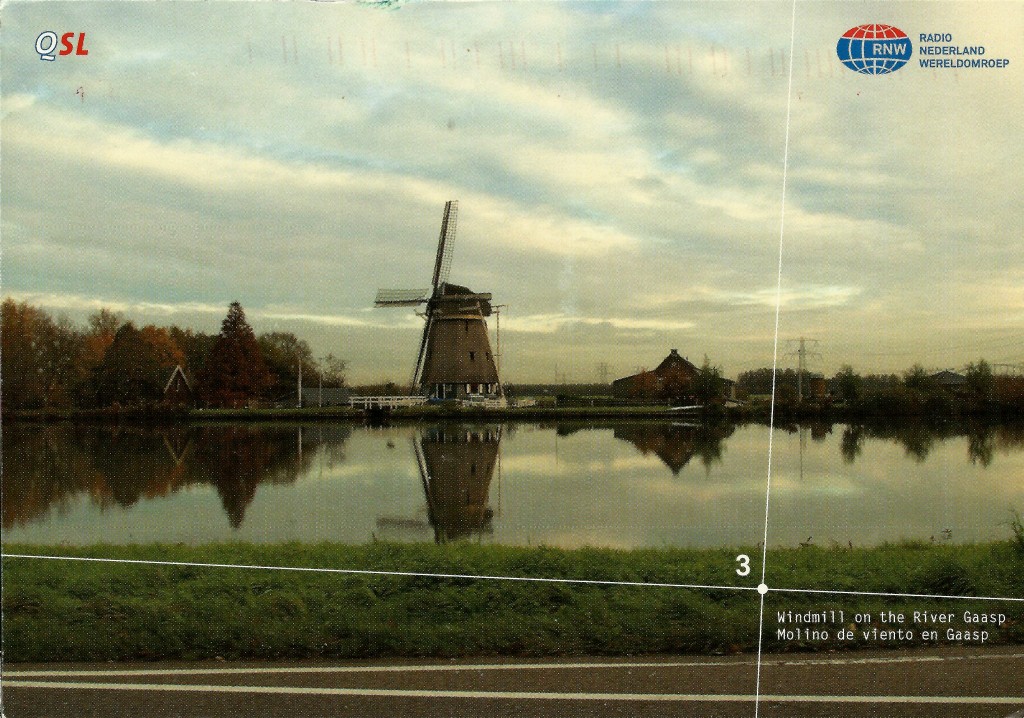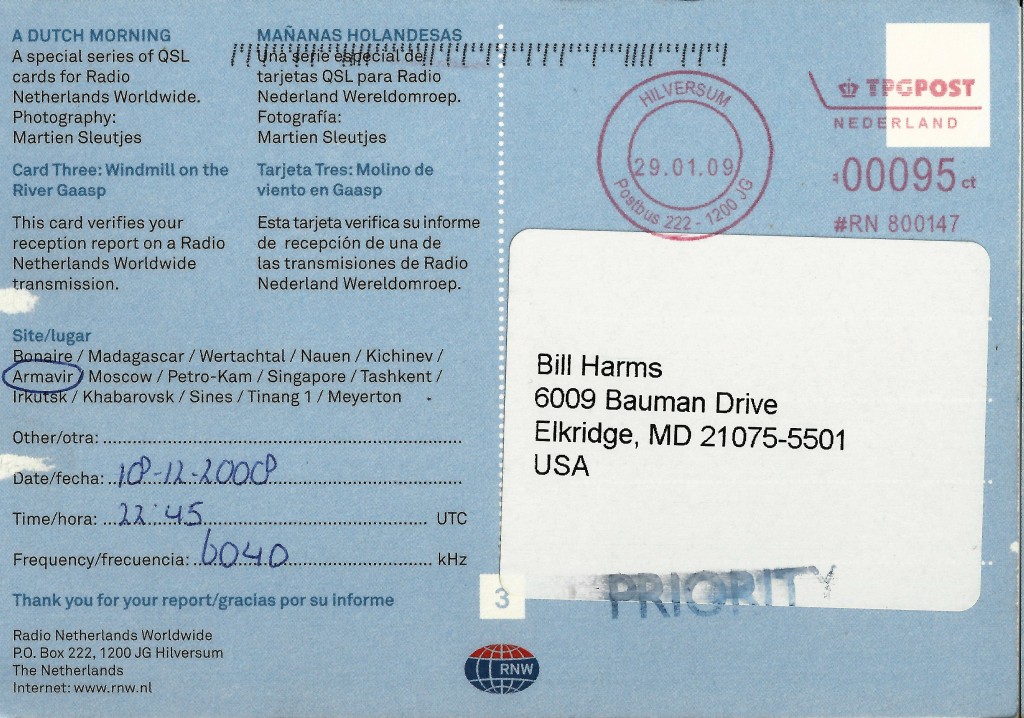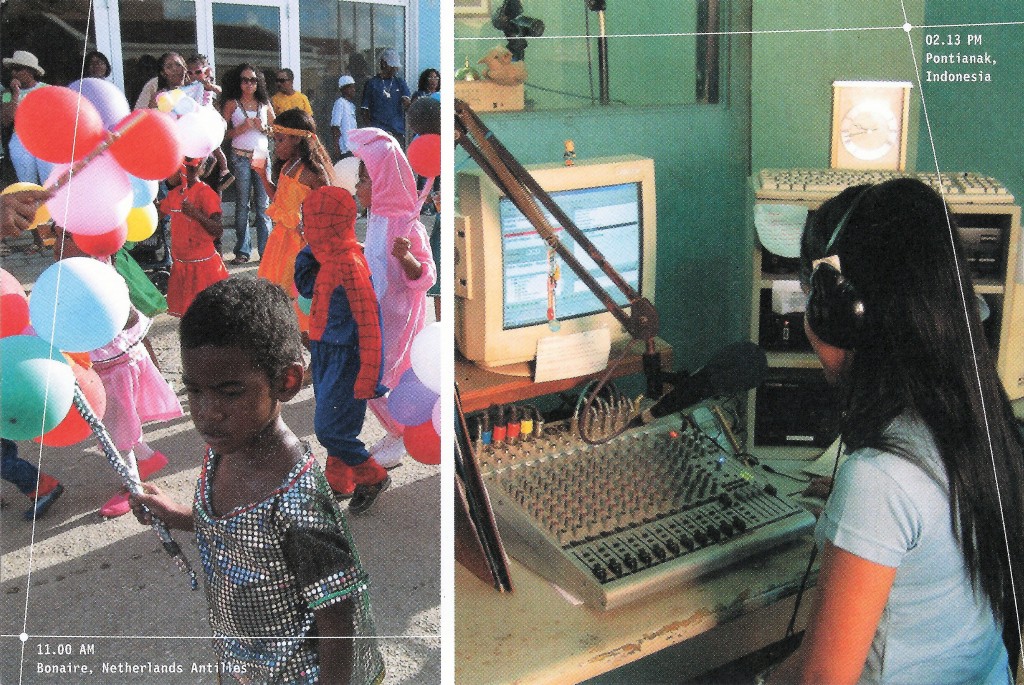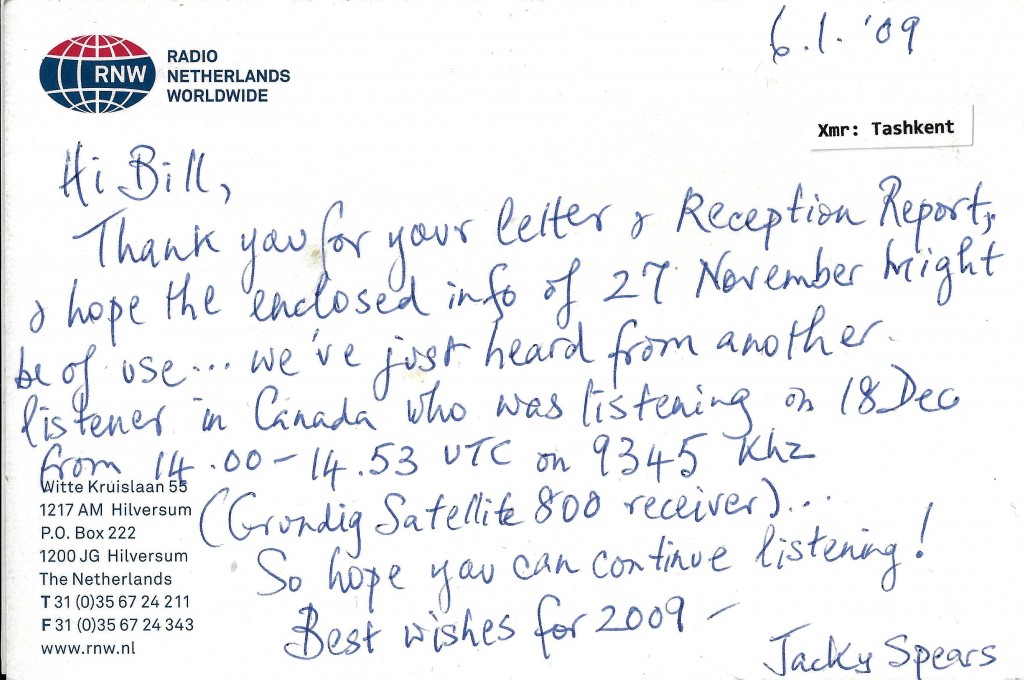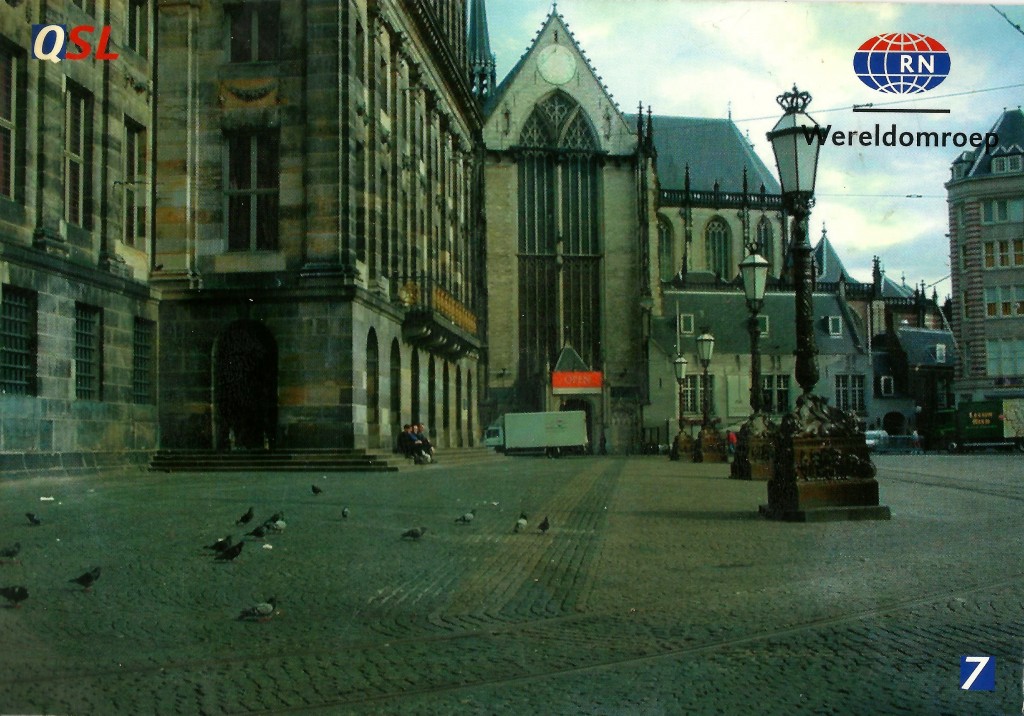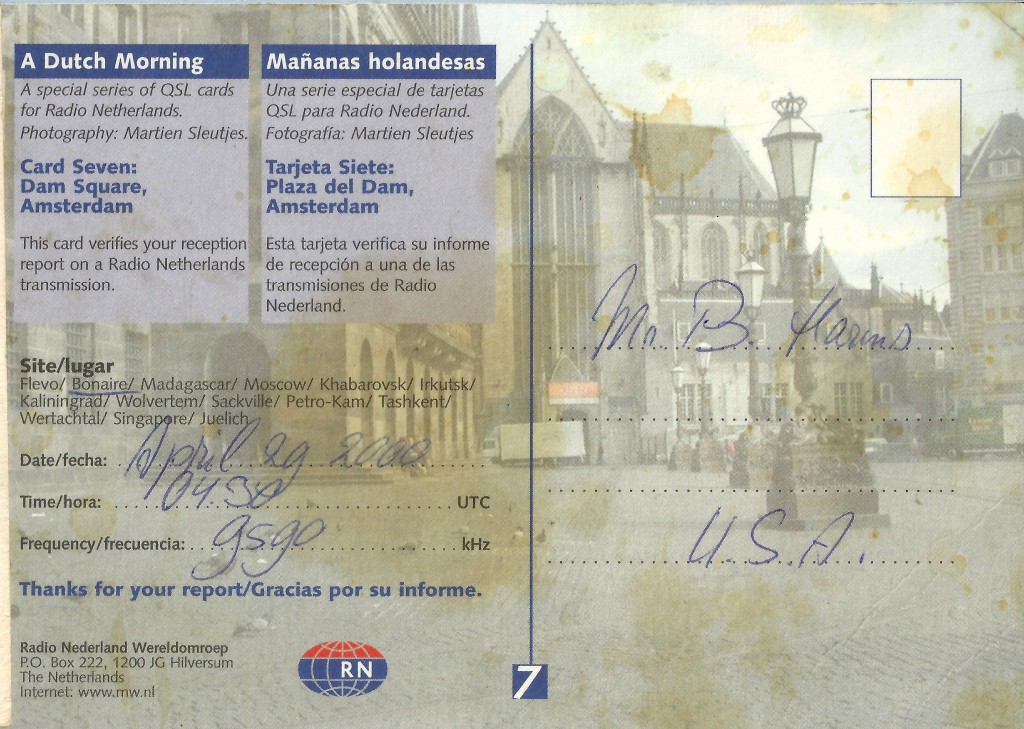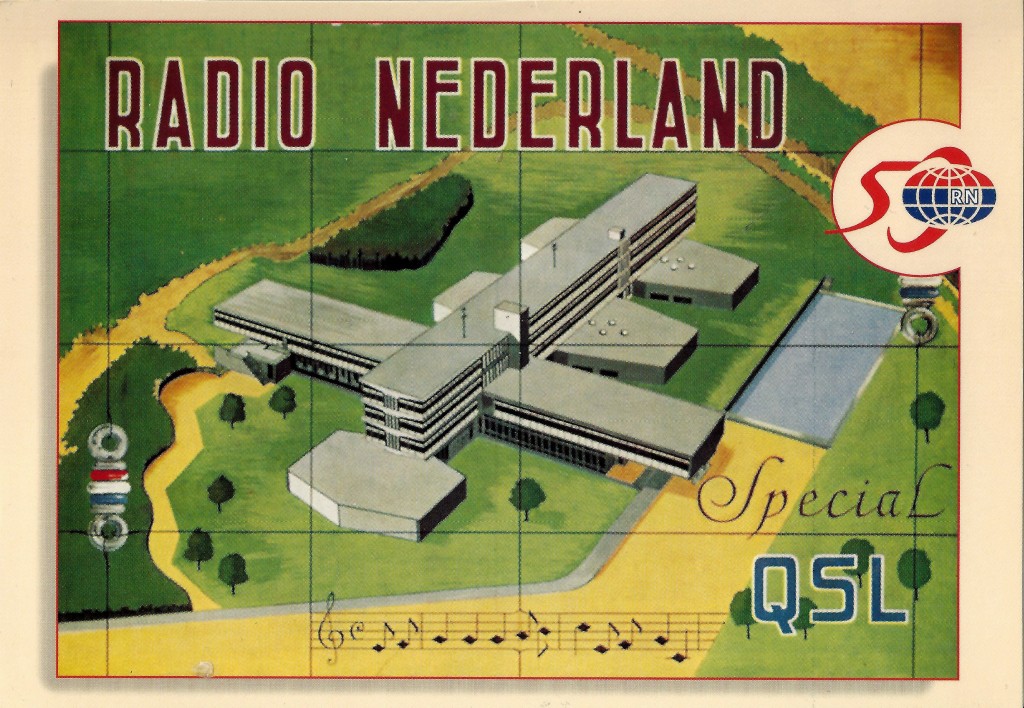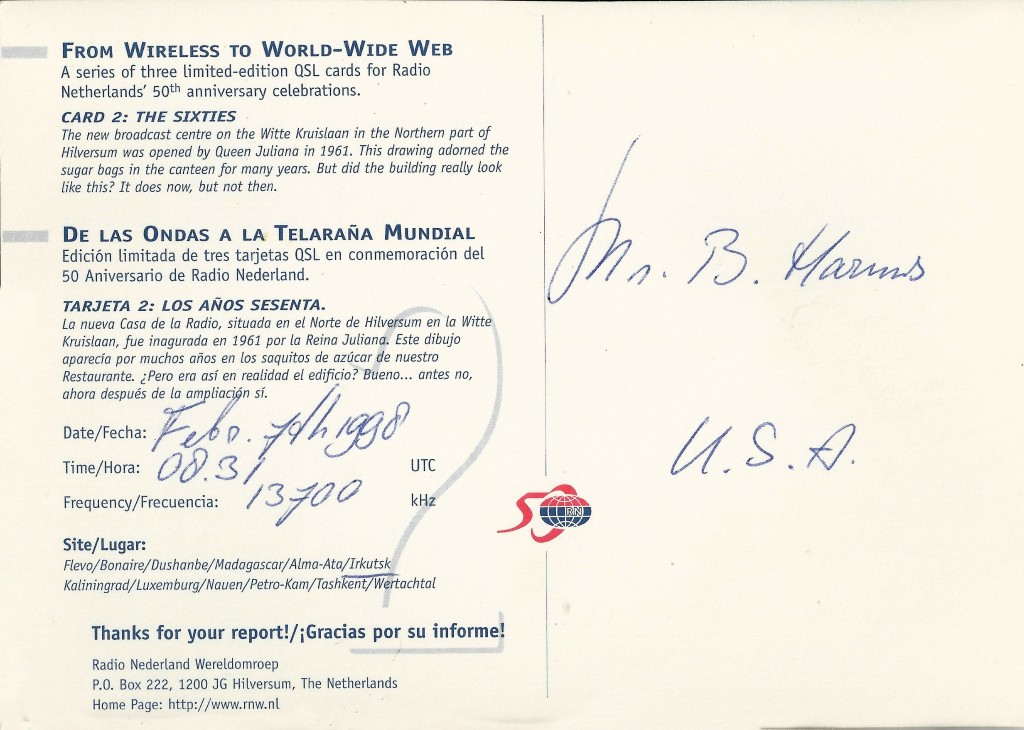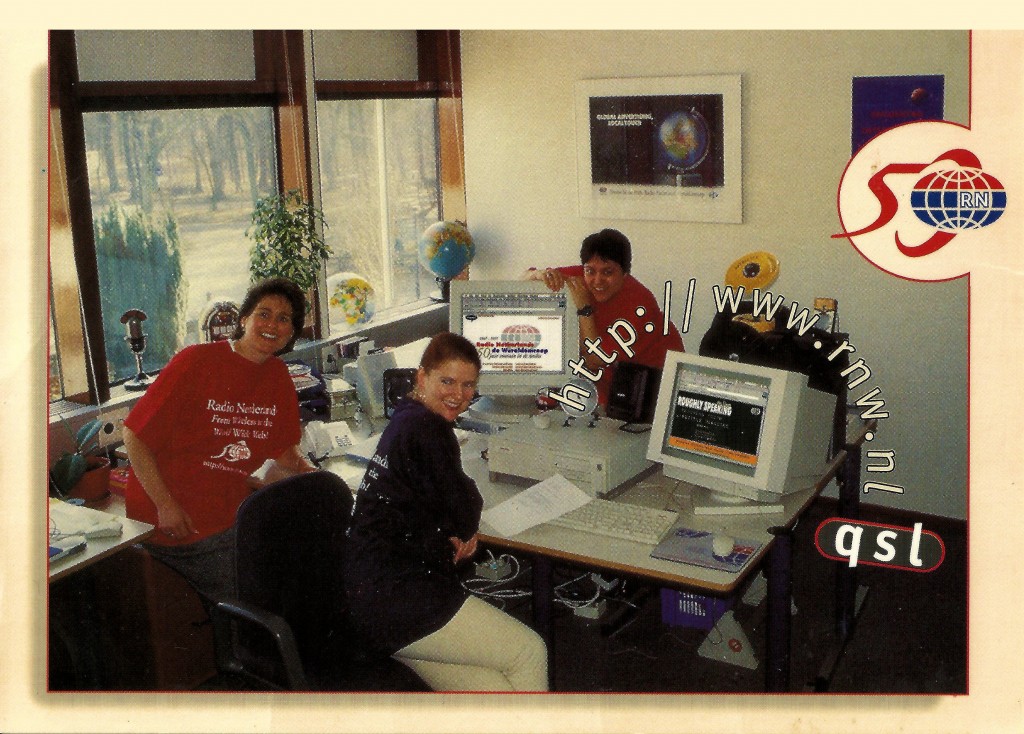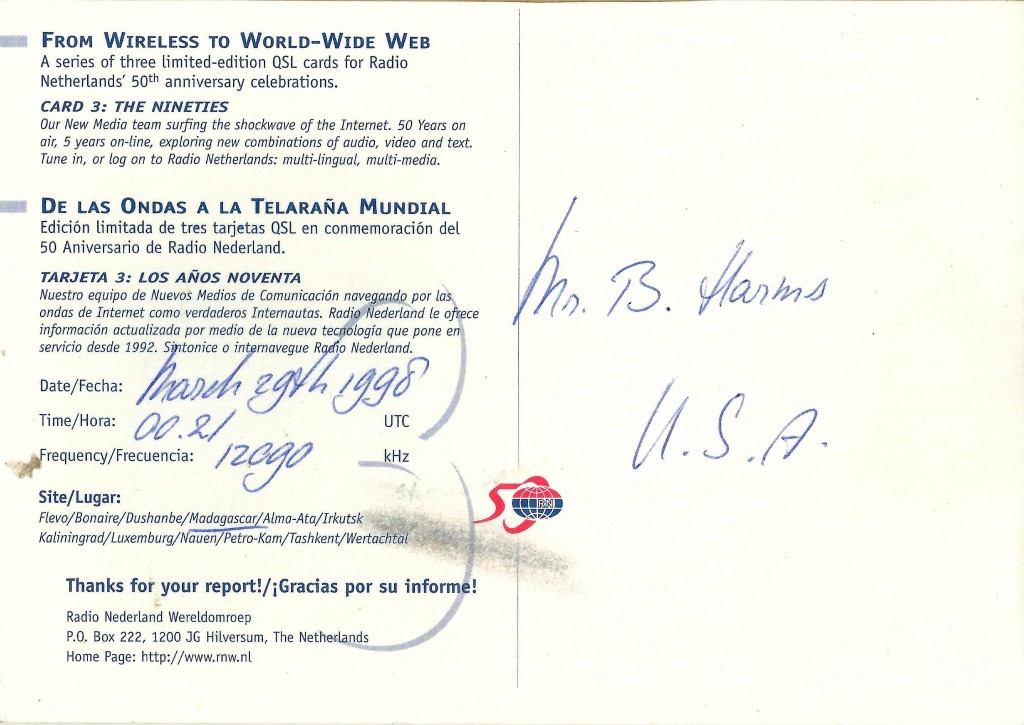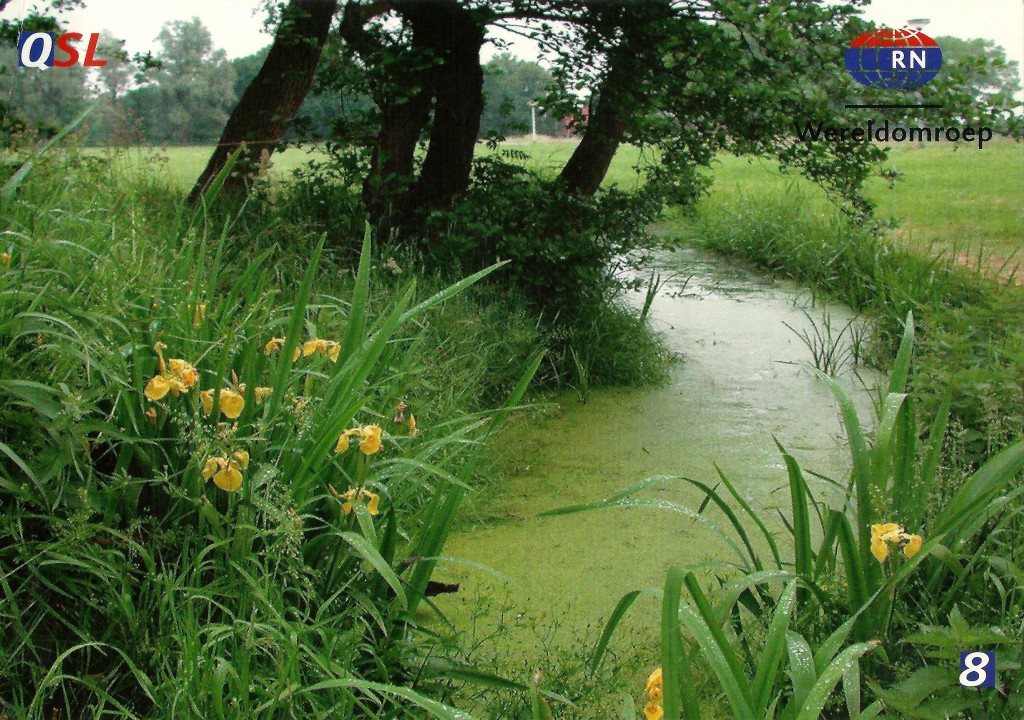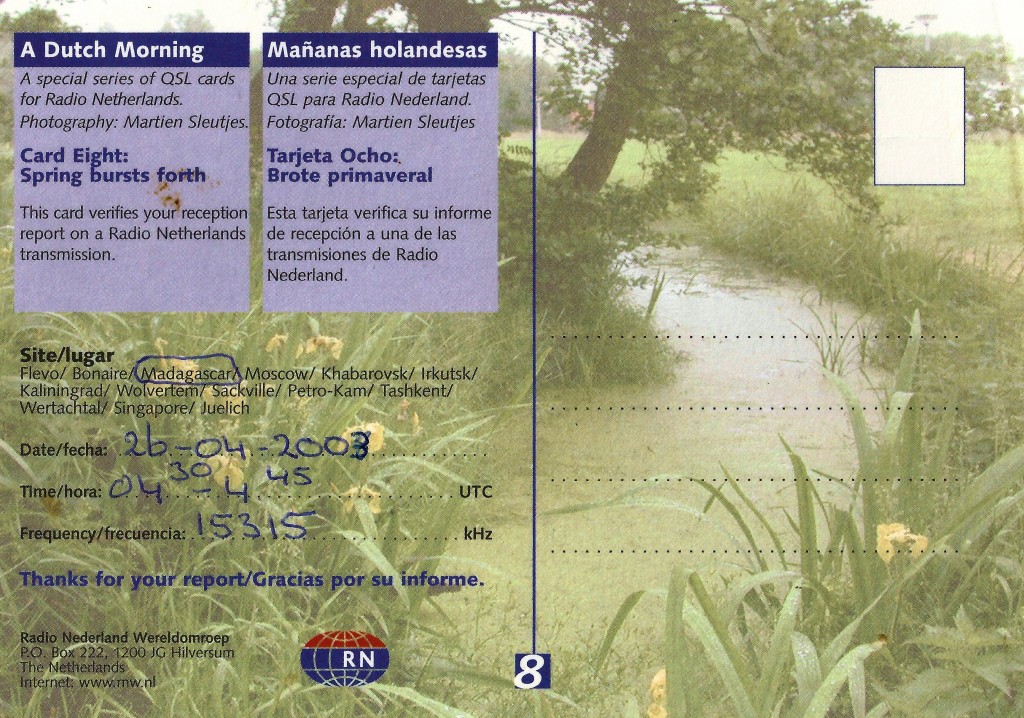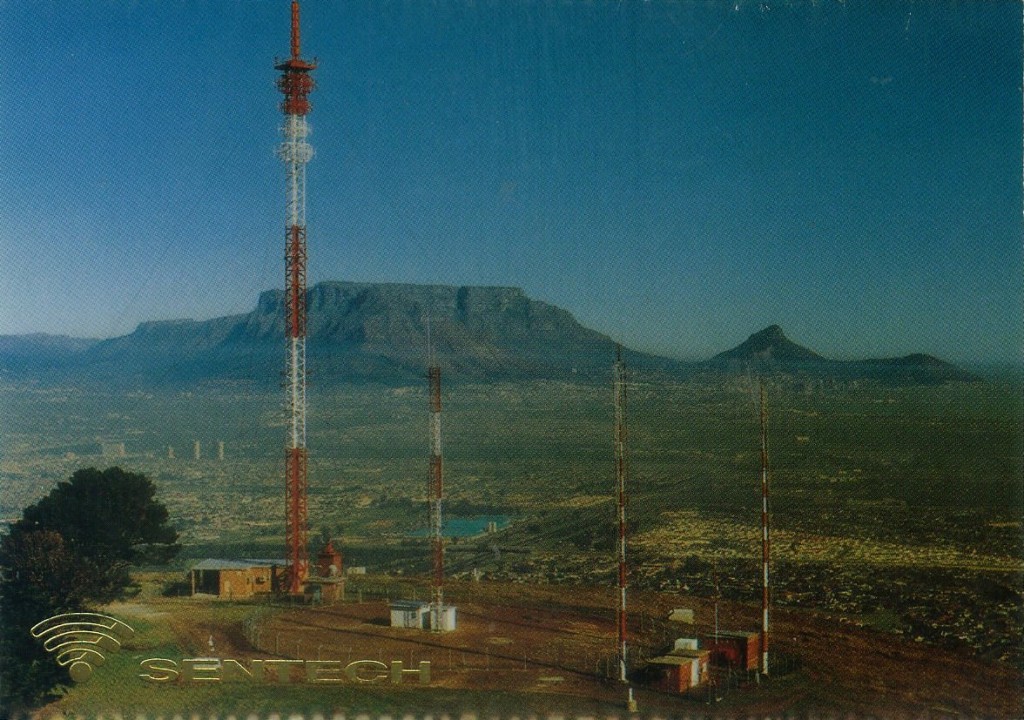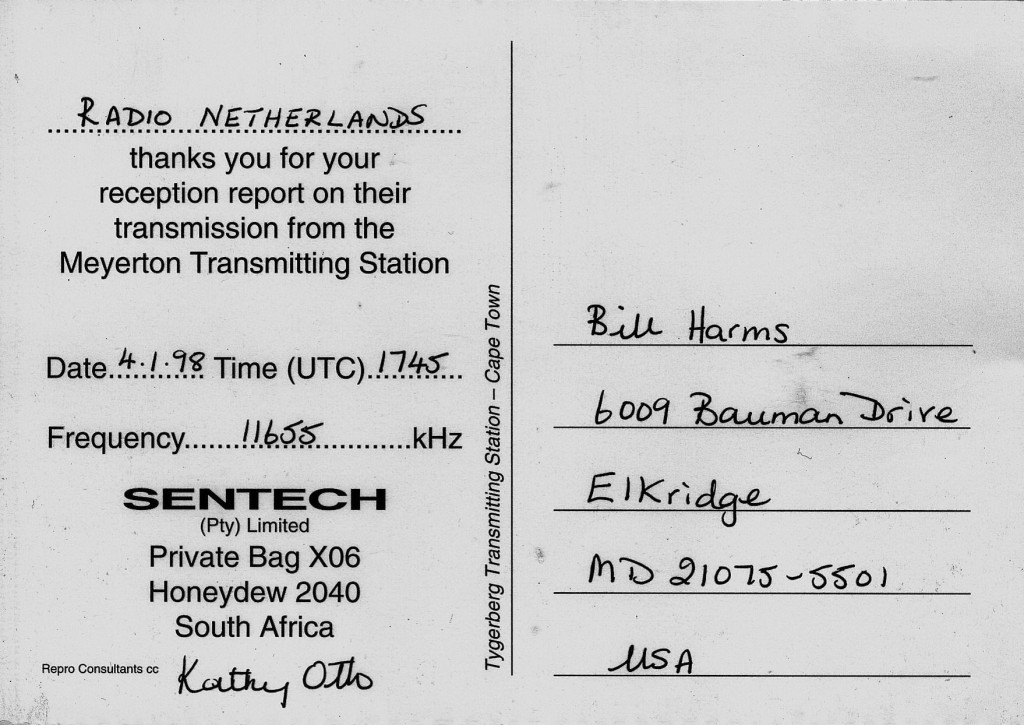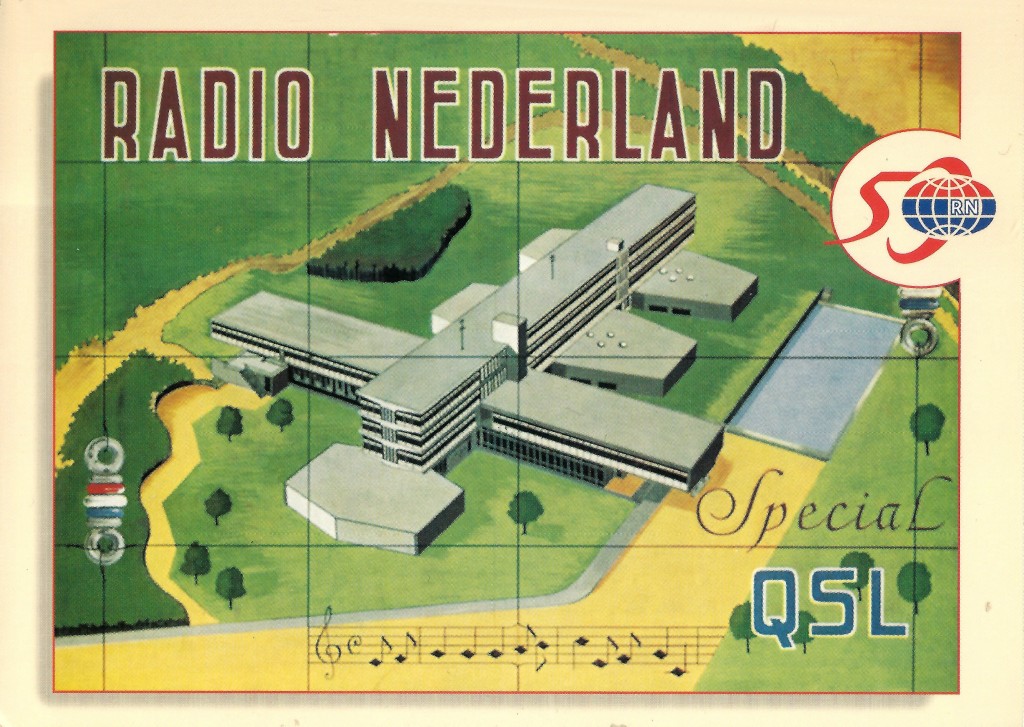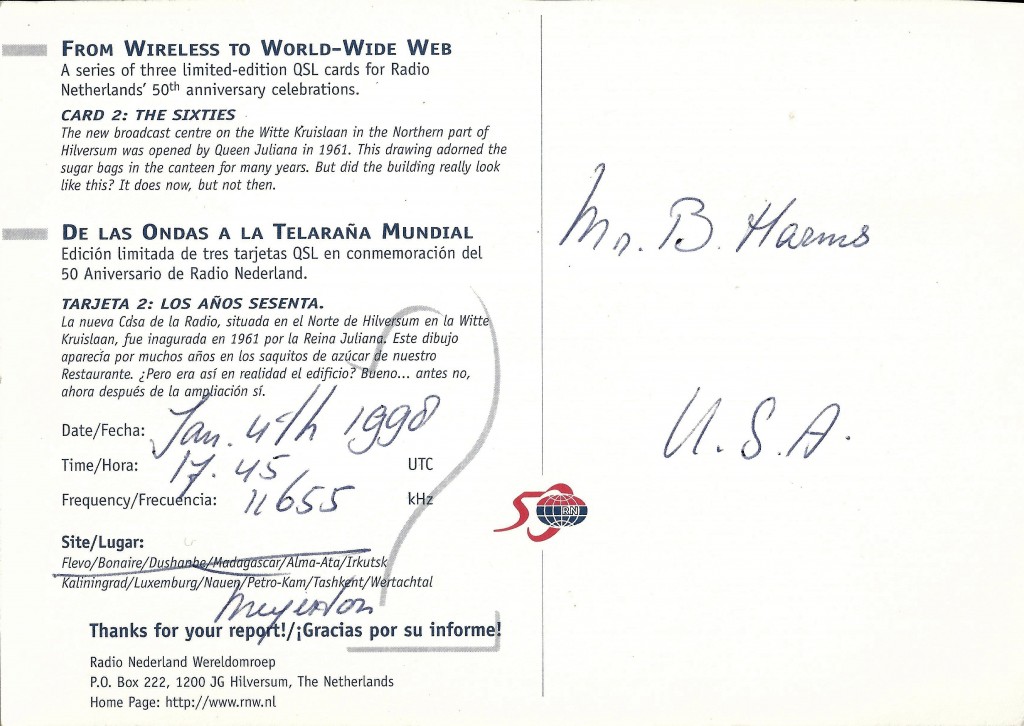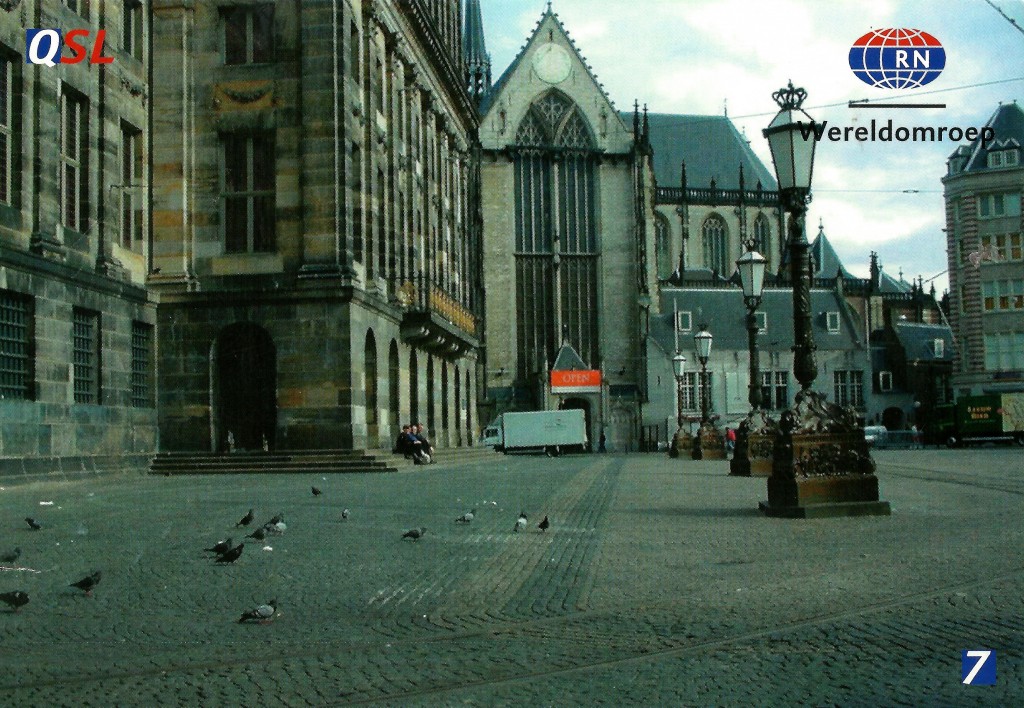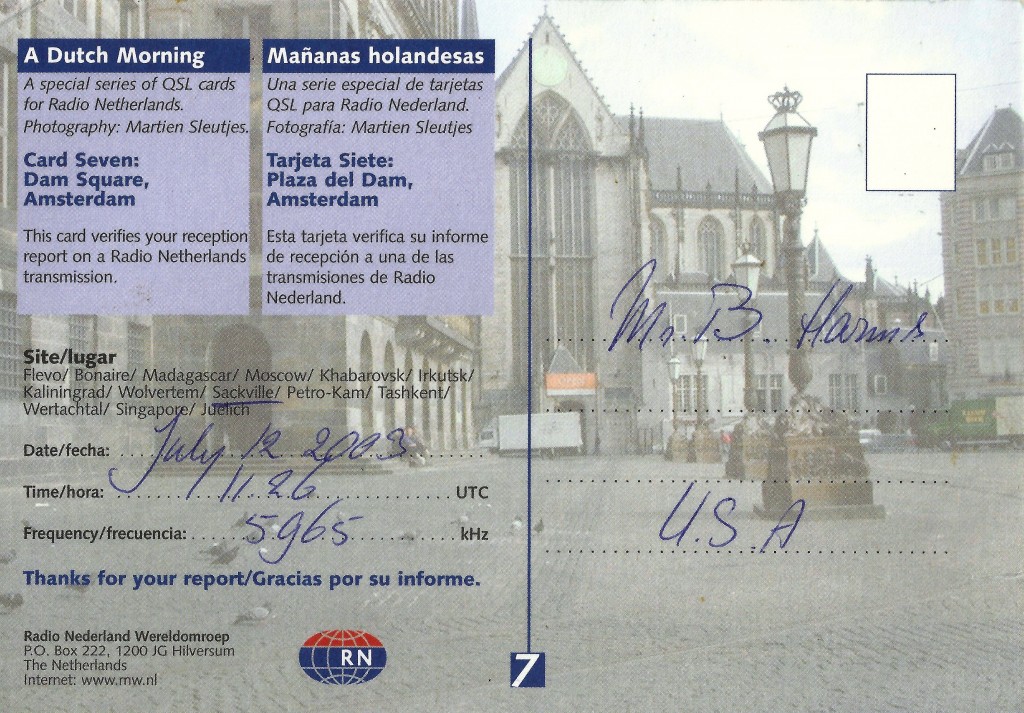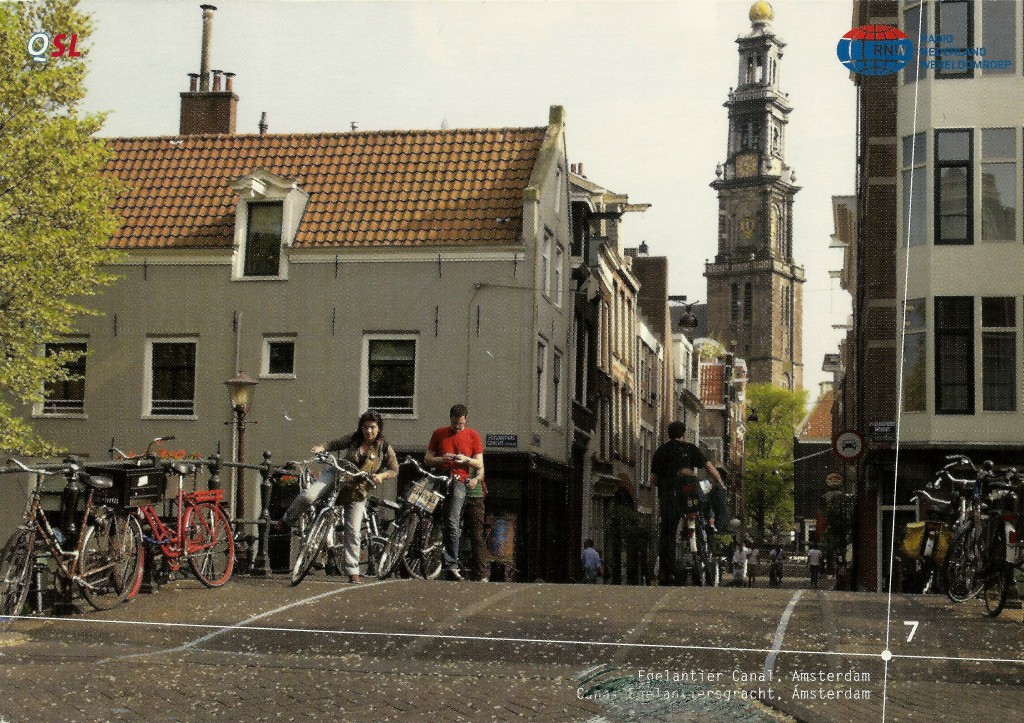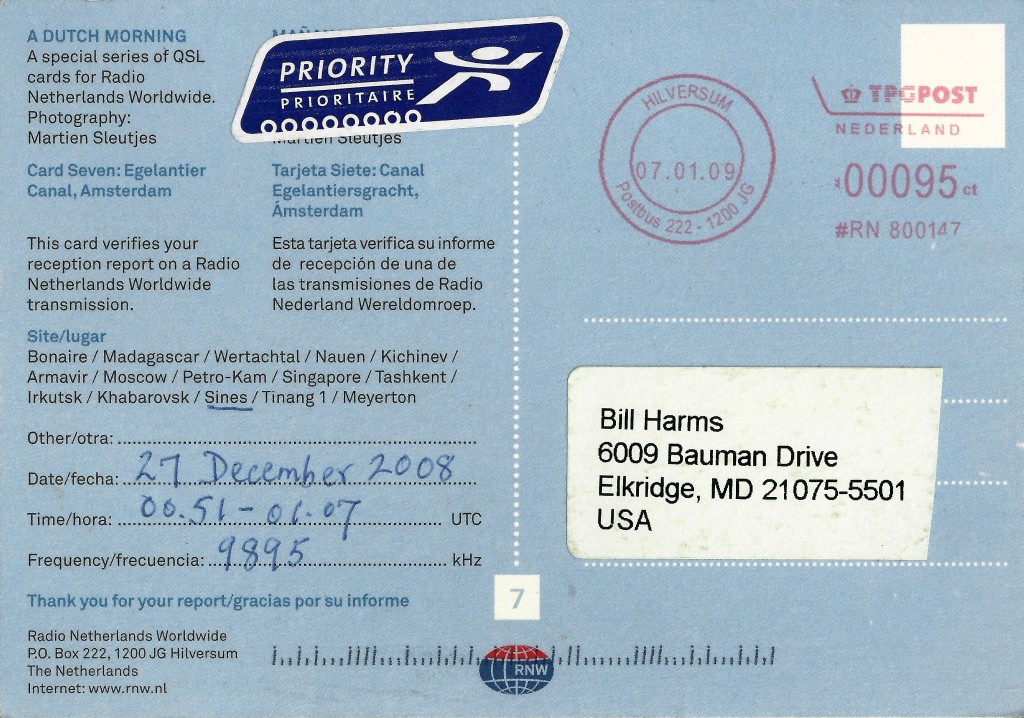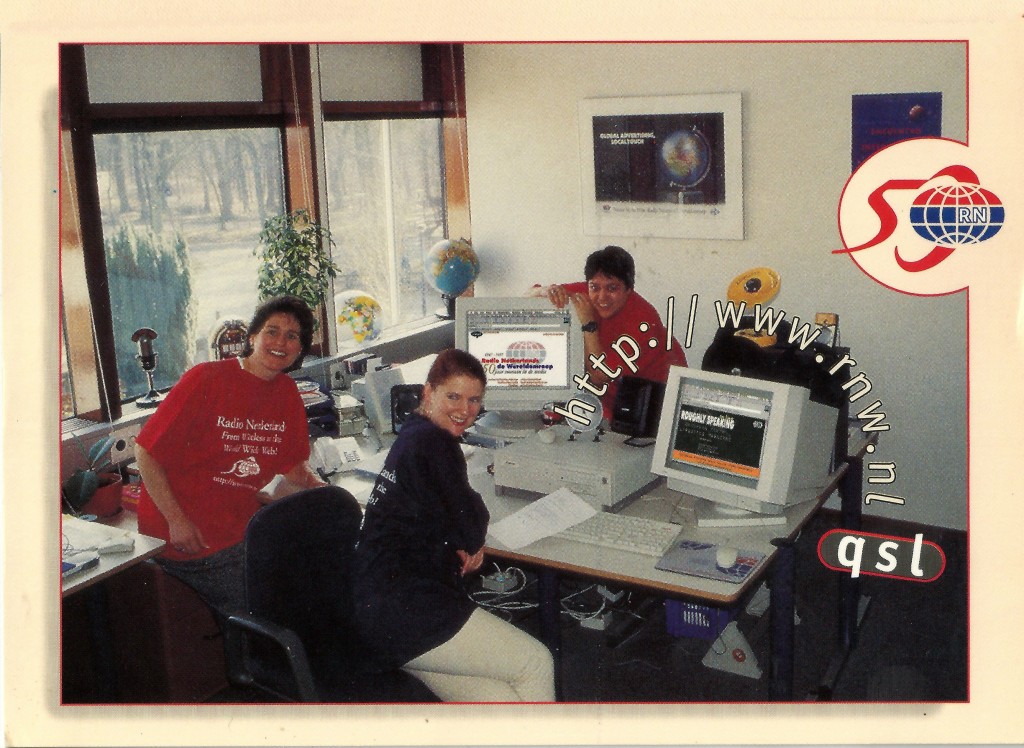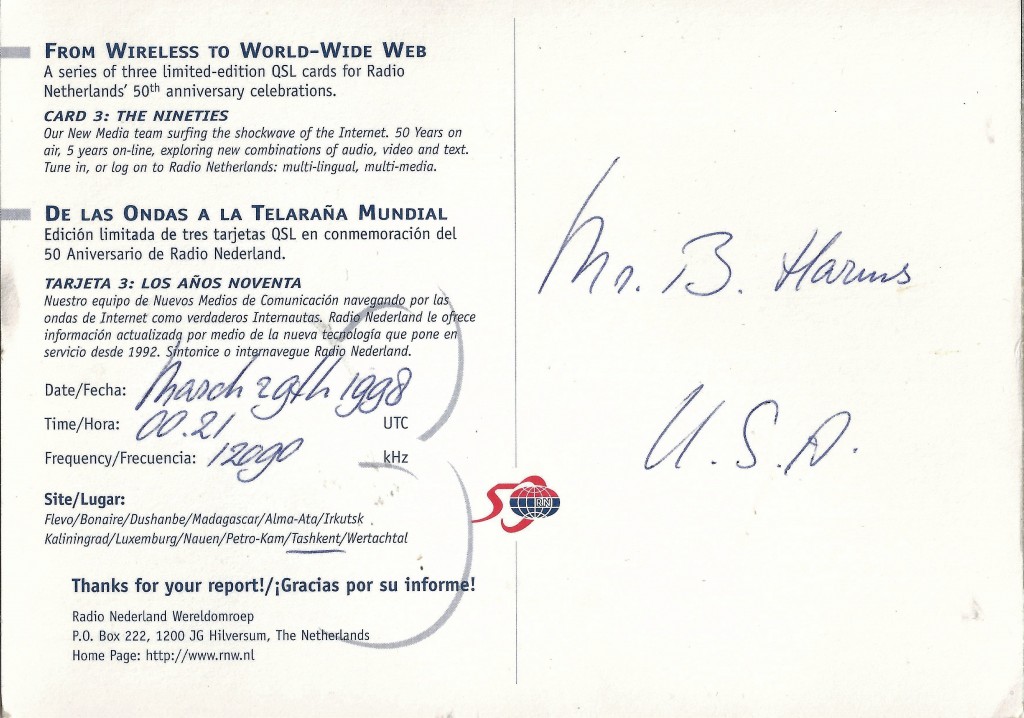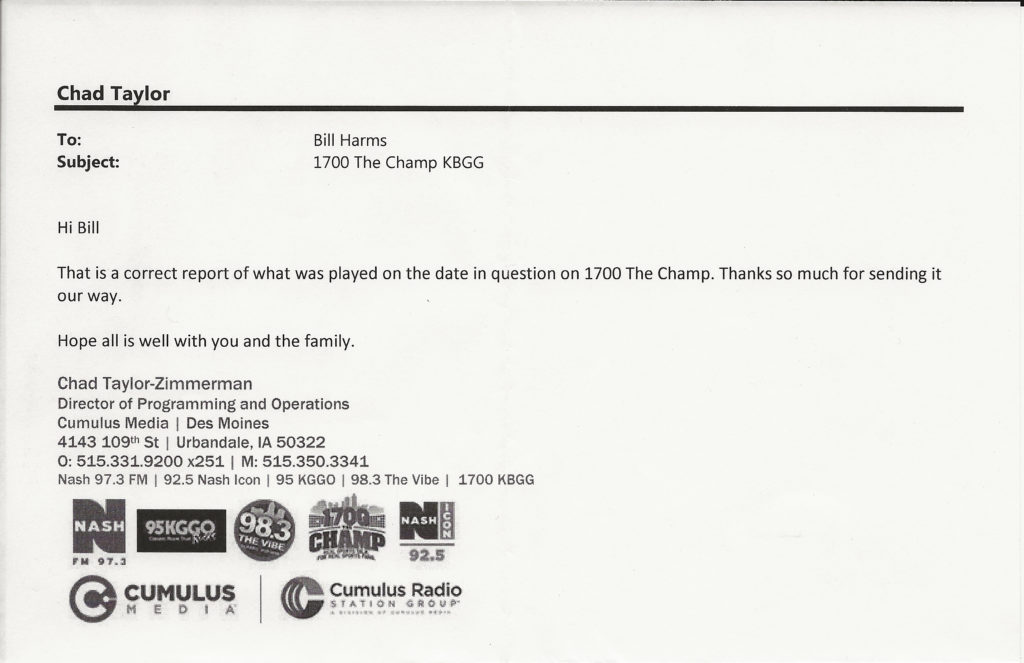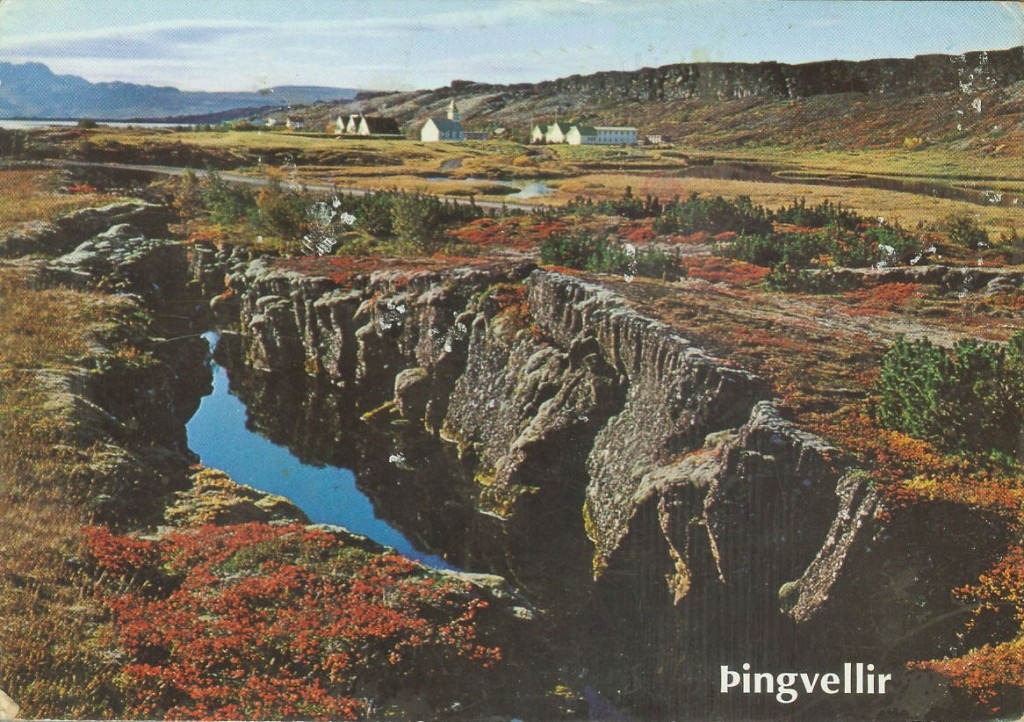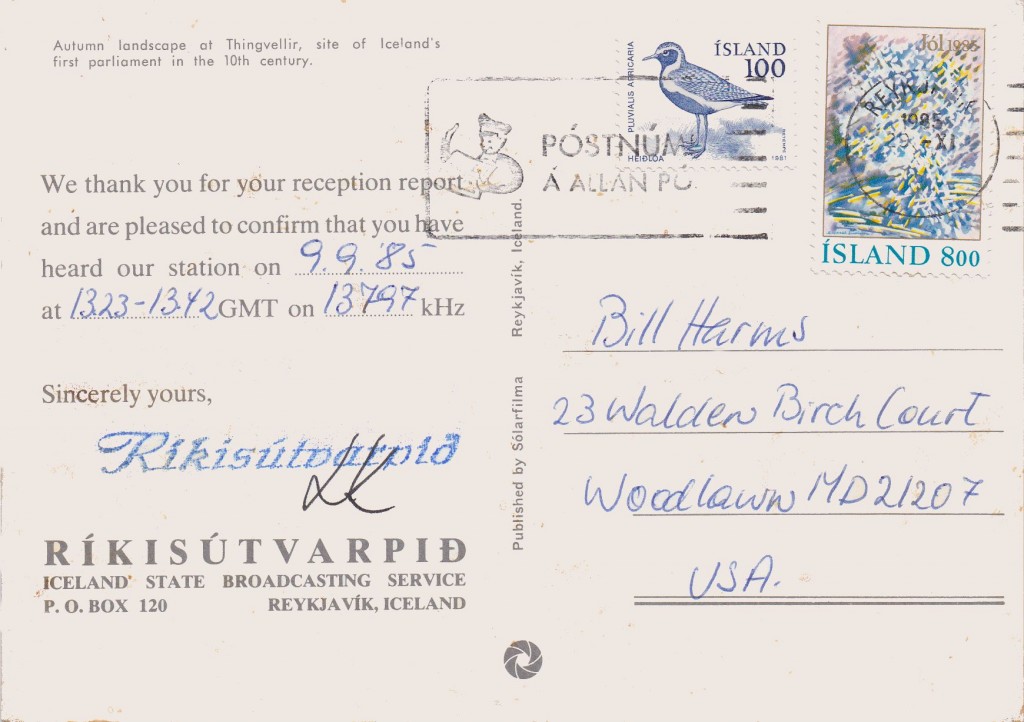Daily Archives: 29 April 2019
KBGG 1700 kHz
Ríkisútvarpið (RÚV)
The Icelandic National Broadcasting Service
Ríkisútvarpið (RÚV) is the national public-service broadcasting service in Iceland. It operates a network which consists of two longwave stations, a number of FM and television transmitters. They also used shortwave for some time. It is my understanding that they used shortwave to broadcast to seamen and fisherman while out at sea. They verified my reception report with the QSL seen here.
Radio Nederland Wereldomroep
Radio Nederland, a renowned presence on shortwave bands, held significant popularity among enthusiasts of the medium. Its origins trace back to the mid-1920s when Phillips initiated experimental international broadcasts from Holland. By 1927, these broadcasts became regular, with the station adopting the call letters PCJ by 1929. During the tumult of the Second World War, the Dutch government-in-exile collaborated with the BBC to produce and transmit programs. On 15 April 1947, the Stichting Radio Nederland Wereldomroep (Radio Netherlands International Foundation) was established, marking a formalization of its mission. In that same year, Radio Nederland commenced broadcasts in English, Spanish, Dutch, and Indonesian.
However, as the new millennium dawned, the Dutch government embarked on a gradual defunding process for Radio Nederland. By 2014, all programming had ceased, marking the end of an era. In its wake, RNW Media emerged as the successor, focusing primarily on fostering media communities for social change.
Among the myriad programs that captivated listeners, DX Jukebox, and later the Media Network, stood out as favorites among DXers. These programs served as invaluable resources, offering tips and insights into shortwave listening and DXing. Another beloved show, The Happy Station Show, entertained audiences from 1928 to 1995, leaving an indelible mark on the airwaves.
One notable aspect of Radio Nederland was its meticulous verification process, often including transmitter site details on their QSL cards. Over the years, enthusiasts like myself received these QSL cards in response to our reception reports, serving as cherished mementos of our interactions with the station. While I had the pleasure of tuning in to broadcasts from various transmitting stations and relay sites, I never had the opportunity to verify reception from the original site in Hilversum.
